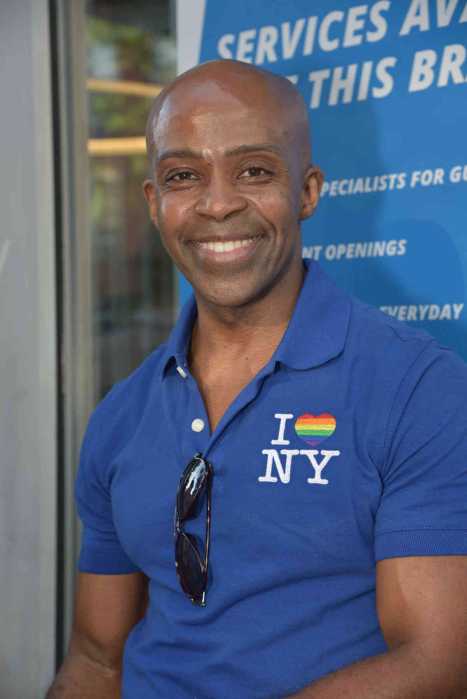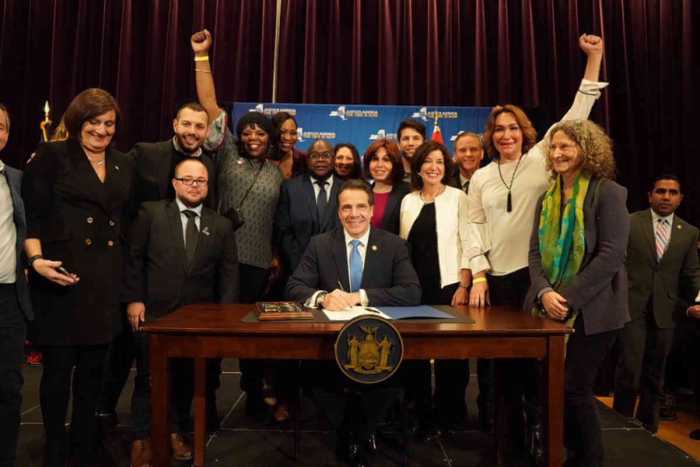BY DUNCAN OSBORNE | In 2009, attorneys Ted Olson and David Boies vowed to take a legal challenge to Proposition 8, a 2008 California ballot initiative that barred same-sex marriage in that state, to the US Supreme Court and win marriage for gay and lesbian couples in all 50 states. What they won there in 2013 was marriage in California.
Chad Griffin, a PR expert who now heads the Human Rights Campaign, founded the American Foundation for Equal Rights, which funded the Prop 8 case and gave extraordinary access to New York Times reporter Jo Becker and documentary filmmakers Ben Cotner and Ryan White to follow the case.
In 2014, despite falling well short of the stated goal of the Prop 8 lawsuit, Becker released her controversial book, “Forcing the Spring: Inside the Fight For Marriage Equality,” Cotner and White launched “The Case Against 8,” a nearly two-hour long documentary, and Olson and Boies published their truly awful book, “Redeeming the Dream: The Case for Marriage Equality.”
Nathaniel Frank brings critical balance, insight to chronicling long road to equality
The two books and the documentary were a media onslaught that was all the more offensive because they represented the organizations that had been battling for marriage for years as obstacles to winning the goal of marriage in all 50 states.
Now comes Nathaniel Frank’s “Awakening: How Gays and Lesbians Brought Marriage Equality to America,” an exhaustively researched book that correctly attributes the basis for the ultimate marriage win to the case that the US Supreme Court heard at the same time as the Prop 8 case — Edie Windsor’s successful challenge to the Defense of Marriage Act (DOMA), a 1996 federal statute that barred the federal government from recognizing same-sex marriages and allowed states to do the same.
With notes that run to 50 pages in this 441-page book, interviews with “over 50” participants in the marriage movement, and published and unpublished documents and records, Frank provides the kind of account that makes for fascinating reading. He correctly places the beginning of the marriage movement in the LGBTQ community’s grassroots and notes that the desire to wed among gay and lesbian couples began decades before any of the community’s advocacy groups conceived of suing for marriage or lobbying any state legislature to enact it.
Frank explores the careful strategy that legal groups, such as Lambda Legal, GLBTQ Legal Advocates & Defenders (GLAD) in Boston, the National Center for Lesbian Rights (NCLR) in San Francisco, and the American Civil Liberties Union (ACLU), employed and debated. He places Evan Wolfson, the founder of Freedom to Marry and probably the most influential proponent of marriage, at the center of the action — where he belongs.
Frank also discusses the debates that occurred among the attorneys who brought marriage lawsuits about where to sue, when to sue, and what arguments to make. They were thoughtful and often discouraged individuals and private attorneys from suing. But they also faced pressure from the community’s grassroots to move faster as the successes mounted.
To an extent, “Awakening” vindicates the strategy of first changing hearts and minds of Americans, a strategy that Wolfson often advocated, before suing in the federal courts. After decades of losing LGBTQ-related ballot initiatives, the marriage movement won four statewide ballot initiatives in the 2012 presidential election. The community had lost more than 30 marriage ballot initiatives prior to that.
But “Awakening” also shows how the attorneys who battled to win marriage for years did not fully appreciate how much the hearts and minds of a few dozen federal judges and ultimately five justices on the US Supreme Court had been changed. If those 30-plus ballot initiative losses formed a bulwark against same-sex marriage, the Windsor decision blasted a very large hole in that bulwark. As Frank notes, some of the damage was caused by Justice Antonin Scalia, now deceased, who wrote a dissent that some marriage proponents and some federal judges would later use in courts to knock down those bans.
After Windsor, marriage bans began to fall at an accelerating rate often in states, such as Utah or in the South, where marriage advocates would never have considered bringing a lawsuit and, in fact, tried to convince attorneys to not bring cases. Marriage was won in 2015 at the US Supreme Court.
Frank, now the director of the online research portal What We Know at Columbia University Law School, has certainly undertaken an ambitious task in writing the recent history of the marriage fight. Any one of the lawsuits or individual state battles would be worth its own book, and there are moments in “Awakening” when I wanted greater detail or hoped to learn more. To cover this history, Frank had to report broadly.
While it would be fair to say that Frank is a cheerleader for the marriage movement — he dedicated the book to his husband — “Awakening” remains an excellent read and an important book on the marriage movement. I hope it will be only the first history of this movement.
AWAKENING: HOW GAYS AND LESBIANS BROUGHT MARRIAGE EQUALITY TO AMERICA | By Nathaniel Frank | Belknap Press/ Harvard University Press | $35; 441 pages




































